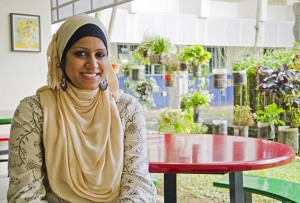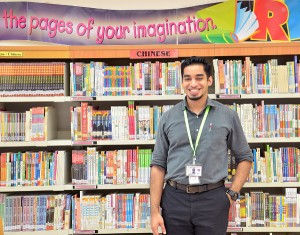Why Singapore’s English Teachers Should Embrace Singlish, Not Fight It
Is it time for Singaporean educators to embrace Singlish as a legitimate learning tool? What the Research […]
Read More
In mainstream schools, there are some students with special needs who might need a little more attention and care. We speak to two Allied Educators about how they help these students keep up with the rest.
Autism, dyslexia, attention deficit hyperactivity disorder and visual or hearing impairment – these are some special needs of students in schools where Mr Syed Muhammad Alkaff and Ms Nadira Ahamed Basir work as Allied Educators (AEDs) in Teaching and Learning (TNL).
Not all of these students were diagnosed when they first started school. Sometimes, it takes a period of observation by their teachers before schools realize they need more help.
“If undiagnosed students show signs of disabilities, the AED will suggest that their parents let them go for medical examination,” Syed, who works in St Hilda’s Secondary School, shares.
“These students are placed in the same class as their other friends who have no special needs,” adds Nadira from Ahmad Ibrahim Secondary School. “But the good thing is, they don’t see their disabilities as a problem to learn!”
AEDs such as Syed and Nadira feel that their role is to provide additional support for these students, so that they can keep up with their peers in the mainstream classroom.

Nadira Ahamed Basir knows that it means a lot to the students if the teachers asked them, “Is everything fine? Do you need help?”
“My role is to assist in classroom management,” shares Syed. On a typical school day, he joins the English Language and Literature classes with some students who are identified to have special needs. Teachers are generally able to handle them, but his presence helps teachers run lessons with fewer distractions, Syed says.
He also conducts “pull-out” sessions where he takes this group of students out of class. “We will sit somewhere else and I focus on them,” he explains. “It is a small group so they feel more secure and I can check if they don’t understand certain things.”
Nadira’s approach is slightly different. “Students who have difficulties in catching up in the classroom will be ‘pulled out’ to the back of the classroom with me,” she says. She will then focus her attention on them while the teacher carries on with the teaching.
However, it isn’t just about students who have learning difficulties. “The partially visual impaired students need more attention,” Nadira adds. “They can’t really see what the teacher writes on the board.”
To ensure that no child gets left behind, Nadira will sit next to that student and write down whatever was written on the board for him or her. “It means a lot to them and they can sense whether you are genuine when you help them.”
Equity is about fairness, Syed says. “It is different from equality; it is giving students a level playing field.”
For students with special needs or learning difficulties, extra attention can make a huge difference.
“When I pull them out, they get to ask questions that they possibly won’t ask in the class,” Syed notes. “Their mistakes also get spotted (by me) easily when they might have gone under the radar in the classroom.”
Such pull-out sessions provide these students the opportunity to improve their learning at the same rate as their peers in spite of their disabilities. “I just give them a bit more attention and just make sure that they know what is going on, because sometimes they say they understand, but sometimes they are just too shy to ask questions,” says Nadira.

Syed Muhammad Alkaff notes that equity is not equality – it is about giving students a level playing field.
For these two AEDs, they see supporting students emotionally as part of their job too. During her secondary school days, Nadira and her classmate used to coach their schoolmates from the Normal (Technical) stream in Science and Math. “In Secondary 4, these students did very well,” she shares. “That was when it really dawned on me that if you give these students that extra help, concern and care, they can really do well!”
Today, she enjoys teaching Normal (Technical) classes and sees these learners as friends rather than her students.
“I always try to get to know them personally and know what their interests are,” she says. Because of her friendly approach, she tends to have students coming to her for counselling as well.
“A lot of kids have problems at home, but they don’t show it. Sometimes, they get aggressive in class, so I bring them out of the class but I don’t scold them,” Nadira says. “I ask them what happened and they will start to break down.
“It means a lot to them if you just ask them: Is everything fine? Do you need help?”
“The culture of care works especially for students with special needs,” Syed says. “I will always talk to them as a person as best as I can rather than as a superior to subordinate.”
“You will find that if you walk around and observe the classes at St. Hilda’s, you won’t see much scolding going on,” he adds. “There’s a lot of conversation and reasoning going on with the kids. The teachers find that building rapport and leveraging on that relationship with them is much more effective than scolding them.”
By supporting these learners with genuine care and concern, AEDs like Syed and Nadira are key actors in the Singapore education system who help ensure that students with special needs will have the chance to thrive and learn in school along with their classmates.